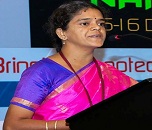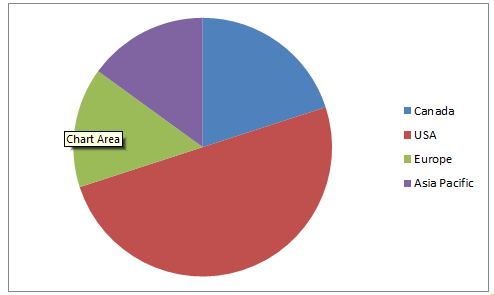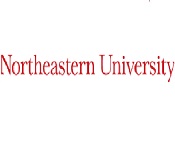Theme: Future prospects in Biotechnology for Economic Growth
Industrial Biotechnology 2018
Conference Series LLC Ltd extends a warm welcome to Annual Industrial Biotechnology and Bioprocessing Congress during September 17-18, 2018 in San Diego, USA with a theme “Future prospects in Biotechnology for Economic Growth”. Conferenceseries through its Open Access Initiative is committed to making genuine and reliable contributions to the scientific community.
Scope and Importance
Industrial Biotechnology 2018 aims to bring together the Professors, Researchers, scientists, business giants, and technocrats to provide an international forum for the dissemination of original research results, new ideas and practical development and discover advances in the field of biotechnology, management and education in relation to biotechnology as well as a breadth of other topics. The applications of biotechnology include therapeutics, diagnostics, and genetically modified crops for agriculture, processed food, bioremediation, waste treatment, and energy production. Industrial Biotechnology 2018 is an excellent opportunity for the delegates from Universities and Institutes to interact with the world class Scientists.
This biotech meeting creates a platform for Policy-makers, Scientists, representatives and decision makers in biotechnology to present their latest biotech research and learn about all the important developments in biotechnology research. The applications of biotechnology include therapeutics, diagnostics, and genetically modified crops for agriculture, processed food, bioremediation, waste treatment, and energy production. Industrial Biotechnology 2018 is an excellent opportunity for the delegates from Universities and Institutes to interact with the world class Scientists. Major topics discussed are Biofuels and Biorefinery, Renewable Chemicals and Biobased Materials, Computational Biomedicine, Bioinformatics and Systems Biology, Molecular Biosensing and Biorobotics, Biomaterials, Biomanufacturing, Bioprocessing.
Conference Series LLC Ltd Organizes 3000+ Global Events with over 600+ Conferences, 1200+ Symposiums, and 1200+ Workshops on Medical, Pharma, Engineering, Science, Technology, and Business.
Who can attend?
Industrial Biotechnology 2018 conference brings together individuals who have an interest in different fields of Biotechnology. Target Audience will be personnel from both industrial and academic fields which include; Professors, Researchers, scientists, business giants, CEOs, COOs, Directors, Vice Presidents, Co-directors, Biotechnologists, Managing Directors, Industry Safety Officers, Environmental & Plant Scientists, Doctorates, Professors, Post Doctorate Fellows, Vendors of Consumer Products/ Managers, Pharmaceutical Scientists, Students from the related fields.
Why to Attend???
Biotechnology conferences provide a global platform for exchanging ideas and make us updated about the latest innovations in Industrial Biotechnology and Bioprocessing. Opportunity to attend the presentations delivered by Eminent Scientists from all over the world.
Benefits:
Accepted abstracts will be published in Journal of Biotechnology & Biomaterials and provided with DOI
Global networking: In transferring and exchanging Ideas
A Unique Opportunity for Advertisers and Sponsors at this International event.
Details of Industrial Biotechnology 2018 in USA:
Conference Series LLC Ltd is organizing Industrial Biotechnology Conference in 2018 at San Diego, USA. We organize Biotechnology Meetings in the fields related to Agriculture Biotechnology & Agro-forestry, Bio manufacturing, Bio refinery, Biofuels, Biochemistry, Protein Engineering, Bioinformatics, Systems Biology, Computational Biomedicine, Biomaterials, Bio polymers, Biosensors, Bioprocessing, Secondary Metabolites, Biotechnology in Vaccine Production, Environmental Biotechnology, Waste Water Management, Enzyme Engineering, Drug Discovery, Fermentation technology, Genetic Engineering, CRISPR/Cas 9 Technology, Industrial, Chemical Biotechnology, Industrial Biotechnology, Nutrigenomics, Microbial Biotechnology, Food Processing, Molecular Bio sensing , Bio robotics, Biomarkers, Molecular Biology, Nano-biotechnology, Bio therapeutics, Petroleum Biotechnology, Green chemicals, Pharmaceutical, Medical Biotechnology, Synthetic, Systems Biotechnology.
|
Conference Name |
Place |
Date |
|
San Diego, California, USA |
September 17-18, 2018 |
- Second generation biofuels
- Microbial pathways for advanced biofuels product
- Synthesis of advanced biofuels
- Valorization of Biorefinery
- Lignocellulosic material in biorefinery
- Integrated biorefinery
- Biorefining systems
Renewable chemicals are used for increasing the use of renewable resources rather than fossil fuels. Renewable chemicals contain all the chemicals which are produced from renewable feedstock such as microorganisms, biomass (plant, animal, and marine), and agricultural raw materials. Renewable chemicals are utilized in several applications across different Chemical industries such as in food processing, housing, textiles, environment, transportation, hygiene, pharmaceutical, and other applications. Renewable chemicals are mainly available as ketones, alcohols, organic acids, and biopolymers. They are used in surfactants and lubricants, consumer goods, resins, and plastics for environmental purpose.
8th World Congress on Plant Science & Genomics July 9-10, 2018 Sydney, Australia; 20th World Congress on Biotechnology and Biotech Industries Meet March 5-7, 2018 London, UK; 7th International Conference and Exhibition on Cell and Gene Therapy March 15-17, 2018 London, UK; 6th International Conference on Integrative Biology May 21-23, 2018 Barcelona, Spain; 4th International Conference on Bioscience July 2-3, 2018 Vienna, Austria; 10th International Conference on Genomics and Molecular Biology May 21-23, 2018 Barcelona, Spain; 11th World Congress on Cell & Tissue Science May 14-15, 2018 Tokyo, Japan ; 4th World Congress on Human Genetics and Genetic Diseases April 23-24, 2018 Dubai, UAE; 8th World Congress on Plant Genomics and Agricultural Sciences August 20-21, 2018 Tokyo, Japan.
- Modelling
- Simulation
- Physiological human
- Molecular dynamics
- Image processing
8th World Congress on Plant Science & Genomics July 9-10, 2018 Sydney, Australia; 20th World Congress on Biotechnology and Biotech Industries Meet March 5-7, 2018 London, UK; 7th International Conference and Exhibition on Cell and Gene Therapy March 15-17, 2018 London, UK; 6th International Conference on Integrative Biology May 21-23, 2018 Barcelona, Spain; 4th International Conference on Bioscience July 2-3, 2018 Vienna, Austria; 10th International Conference on Genomics and Molecular Biology May 21-23, 2018 Barcelona, Spain; 11th World Congress on Cell & Tissue Science May 14-15, 2018 Tokyo, Japan ; 4th World Congress on Human Genetics and Genetic Diseases April 23-24, 2018 Dubai, UAE; 8th World Congress on Plant Genomics and Agricultural Sciences August 20-21, 2018 Tokyo, Japan.
CRISPR Technologies
Genome editing and the utilization of CRISPR primarily based technologies are expected to revolutionize the assembly of the next generation of bioproducts. DCB12 can focus on the most recent developments within the use of CRISPR/Cas9 and alternative CRISPR primarily based technologies in reference to the development and production of biopharmaceuticals, biochemicals, agricultural crops, and travel applications.
8th World Congress on Plant Science & Genomics July 9-10, 2018 Sydney, Australia; 20th World Congress on Biotechnology and Biotech Industries Meet March 5-7, 2018 London, UK; 7th International Conference and Exhibition on Cell and Gene Therapy March 15-17, 2018 London, UK; 6th International Conference on Integrative Biology May 21-23, 2018 Barcelona, Spain; 4th International Conference on Bioscience July 2-3, 2018 Vienna, Austria; 10th International Conference on Genomics and Molecular Biology May 21-23, 2018 Barcelona, Spain; 11th World Congress on Cell & Tissue Science May 14-15, 2018 Tokyo, Japan ; 4th World Congress on Human Genetics and Genetic Diseases April 23-24, 2018 Dubai, UAE; 8th World Congress on Plant Genomics and Agricultural Sciences August 20-21, 2018 Tokyo, Japan.
- DNA sequencing
- Sequence assembly
- Genome annotation
- Computational evolutionary biology
8th World Congress on Plant Science & Genomics July 9-10, 2018 Sydney, Australia; 20th World Congress on Biotechnology and Biotech Industries Meet March 5-7, 2018 London, UK; 7th International Conference and Exhibition on Cell and Gene Therapy March 15-17, 2018 London, UK; 6th International Conference on Integrative Biology May 21-23, 2018 Barcelona, Spain; 4th International Conference on Bioscience July 2-3, 2018 Vienna, Austria; 10th International Conference on Genomics and Molecular Biology May 21-23, 2018 Barcelona, Spain; 11th World Congress on Cell & Tissue Science May 14-15, 2018 Tokyo, Japan ; 4th World Congress on Human Genetics and Genetic Diseases April 23-24, 2018 Dubai, UAE; 8th World Congress on Plant Genomics and Agricultural Sciences August 20-21, 2018 Tokyo, Japan.
Data Analysis in System Biology
Systems biology is a branch of science that is a field of biology aimed at understanding biological processes at the systems level and developing from dynamic interactions of individual elements operative at multiple spatiotemporal scales. This field considers organic Systems by expeditiously bothering them (organically, hereditarily, or artificially) and perceptive the standard, protein, and academic pathway reactions, incorporating this information; decreases within the expense of manufacturing genomic data have created deoxyribonucleic acid sequencing, RNA-sequence, associated high-throughput screening an undeniably imperative piece of medicine exploration.
- Next-generation metabolomics
- Targeted metabolic profiling
- Data integration pathway analysis
- Integrating gene expression and metabolomics data
8th World Congress on Plant Science & Genomics July 9-10, 2018 Sydney, Australia; 20th World Congress on Biotechnology and Biotech Industries Meet March 5-7, 2018 London, UK; 7th International Conference and Exhibition on Cell and Gene Therapy March 15-17, 2018 London, UK; 6th International Conference on Integrative Biology May 21-23, 2018 Barcelona, Spain; 4th International Conference on Bioscience July 2-3, 2018 Vienna, Austria; 10th International Conference on Genomics and Molecular Biology May 21-23, 2018 Barcelona, Spain; 11th World Congress on Cell & Tissue Science May 14-15, 2018 Tokyo, Japan ; 4th World Congress on Human Genetics and Genetic Diseases April 23-24, 2018 Dubai, UAE; 8th World Congress on Plant Genomics and Agricultural Sciences August 20-21, 2018 Tokyo, Japan.
- Antibody/antigen interactions
- Artificial binding proteins
- Enzymatic interactions
- Affinity binding receptors
- Nucleic acid interactions
8th World Congress on Plant Science & Genomics July 9-10, 2018 Sydney, Australia; 20th World Congress on Biotechnology and Biotech Industries Meet March 5-7, 2018 London, UK; 7th International Conference and Exhibition on Cell and Gene Therapy March 15-17, 2018 London, UK; 6th International Conference on Integrative Biology May 21-23, 2018 Barcelona, Spain; 4th International Conference on Bioscience July 2-3, 2018 Vienna, Austria; 10th International Conference on Genomics and Molecular Biology May 21-23, 2018 Barcelona, Spain; 11th World Congress on Cell & Tissue Science May 14-15, 2018 Tokyo, Japan ; 4th World Congress on Human Genetics and Genetic Diseases April 23-24, 2018 Dubai, UAE; 8th World Congress on Plant Genomics and Agricultural Sciences August 20-21, 2018 Tokyo, Japan.
Molecular Biology & Biochemistry
Molecular biology is the branch of biological science that deals with a molecular basis of biological activity including the interactions between the different types of DNA, RNA and proteins and their biosynthesis, and studies how these interactions are regulated. The field overlaps with other areas of biology and chemistry, particularly genetics and biochemistry. It has many applications such as gene searching, molecular mechanisms of diseases and its therapeutic approaches by cloning, expression, and regulation of the gene. Research area includes gene expression, epigenetics and structure, and function of chromatin, RNA processing, functions of non-coding RNAs, transcription. Recently, most advanced researches are going on these topics: Molecular biology, structural mechanism of DNA replication, repair and recombination, Transcription, RNA processing, Post-translational modification, proteomics, Genetic Mutation, Site-directed mutagenesis, Epigenetics, Molecular mechanisms of diseases.
- Transcription and Gene Expression
- Post-translational modification, proteomics
- Mutation, Site-directed mutagenesis
- Epigenetics, chromatin structure, and function
- Molecular mechanisms of diseases
Drug Discovery and Protein Biotechnology
Drug discovery is the process through which potential new medicines are recognized and comprises an extensive range of scientific disciplines, including biology, chemistry, and pharmacology. The integration of pharmacodynamics and pharmacokinetic parameters in non-clinical pharmacology studies is a key characteristic in drug discovery for efficacy and safety assessment, in the particular for the translation from the non-clinical to clinical field and process of drug discovery include the identification of candidates, synthesis, characterization, screening, and assays for therapeutic efficacy whereas modern drug discovery involves the identification of screening hits, medicinal chemistry and optimization of those hits to increase the affinity, selectivity, efficacy/potency, metabolic stability, and oral bioavailability. The "final product" of drug discovery is a patent on the potential drug.
- Cell-based systems
- Bacterial systems
- Corynebacterium
- Filamentous fungi
- Non-lytic insect cell expression
Industrial biotechnology is a set of practices that use living cells (such as bacteria, yeast, algae) or component of cells like enzymes, to generate industrial products and processes. Industrial biotechnology can be used to: Create new products, such as plant-based biodegradable plastics; Replace petroleum-based feedstock’s by processing biomass in bio refineries to produce electricity, transport fuels or chemicals; Modify and develop new industrial processes, such as by using enzymes to reduce the amount of harsh chemicals used the textile or pulp and paper industries; Reduce the environmental impact of manufacturing; for example by treating industrial wastewater onsite using biological mediums such as microbes; Industrial biotechnology is one of the most promising new approaches to pollution prevention, resource conservation, and cost reduction. It is often referred to as the third wave in biotechnology. If developed to its full potential, industrial biotechnology may have a larger impact on the world than health care and agricultural biotechnology. It offers businesses a way to reduce costs and create new markets while protecting the environment. Also, since many of its products do not require the lengthy review times that drug products must undergo, it's a quicker, easier pathway to the market. Today, new industrial processes can be taken from lab study to commercial application in two to five years, compared to up to a decade for drugs.
- Micro-organisms
- Petrochemical-Based Economy
- Renewable Chemicals and Biobased Materials
- Microbial growth curve and growth kinetics
- Mass transfer relationship and Rheological properties
- Secondary metabolites and Industrial enzymes
- Pharmaceutical techniques and drug discovery
- Bio value added products and Novel Vaccines
- Industrial Fermentation
Nano-biotechnology
- Nano Science & Nano Technology
- NanoMedicine
- Nano Toxicology
- Nano Chemistry
- NanoPharmaceuticals
- Nano-Biomaterials
- Nano Metrology
- Advanced Nanomaterials
- Nano Biometrics
- Nano Photonics
Biomaterials
- For cancer therapy
- For ophthalmic applications
- For orthopedic applications
- For musculoskeletal orthopedics and tissues
- Induced regeneration
- For breast implants
- In vascular grafts and embolic devices
- For vascularization
- Non-medical applications
8th World Congress on Plant Science & Genomics July 9-10, 2018 Sydney, Australia; 20th World Congress on Biotechnology and Biotech Industries Meet March 5-7, 2018 London, UK; 7th International Conference and Exhibition on Cell and Gene Therapy March 15-17, 2018 London, UK; 6th International Conference on Integrative Biology May 21-23, 2018 Barcelona, Spain; 4th International Conference on Bioscience July 2-3, 2018 Vienna, Austria; 10th International Conference on Genomics and Molecular Biology May 21-23, 2018 Barcelona, Spain; 11th World Congress on Cell & Tissue Science May 14-15, 2018 Tokyo, Japan ; 4th World Congress on Human Genetics and Genetic Diseases April 23-24, 2018 Dubai, UAE; 8th World Congress on Plant Genomics and Agricultural Sciences August 20-21, 2018 Tokyo, Japan.
- Blood plasma fractionation
- Cell culture
- Cell separation, such as filtration and centrifugation
- Fermentation
- Homogenization
- Column chromatography
8th World Congress on Plant Science & Genomics July 9-10, 2018 Sydney, Australia; 20th World Congress on Biotechnology and Biotech Industries Meet March 5-7, 2018 London, UK; 7th International Conference and Exhibition on Cell and Gene Therapy March 15-17, 2018 London, UK; 6th International Conference on Integrative Biology May 21-23, 2018 Barcelona, Spain; 4th International Conference on Bioscience July 2-3, 2018 Vienna, Austria; 10th International Conference on Genomics and Molecular Biology May 21-23, 2018 Barcelona, Spain; 11th World Congress on Cell & Tissue Science May 14-15, 2018 Tokyo, Japan ; 4th World Congress on Human Genetics and Genetic Diseases April 23-24, 2018 Dubai, UAE; 8th World Congress on Plant Genomics and Agricultural Sciences August 20-21, 2018 Tokyo, Japan.
- Upstream Processing
- Downstream Processing
- Gene & Cell Therapy
- Analytical & Quality
8th World Congress on Plant Science & Genomics July 9-10, 2018 Sydney, Australia; 20th World Congress on Biotechnology and Biotech Industries Meet March 5-7, 2018 London, UK; 7th International Conference and Exhibition on Cell and Gene Therapy March 15-17, 2018 London, UK; 6th International Conference on Integrative Biology May 21-23, 2018 Barcelona, Spain; 4th International Conference on Bioscience July 2-3, 2018 Vienna, Austria; 10th International Conference on Genomics and Molecular Biology May 21-23, 2018 Barcelona, Spain; 11th World Congress on Cell & Tissue Science May 14-15, 2018 Tokyo, Japan ; 4th World Congress on Human Genetics and Genetic Diseases April 23-24, 2018 Dubai, UAE; 8th World Congress on Plant Genomics and Agricultural Sciences August 20-21, 2018 Tokyo, Japan.
| Industrial Biotechnology |
| Micro-organisms |
The worldwide biotechnology showcase measure was evaluated at USD 369.62 billion out of 2016. Nearness of space for associations in the area is relied upon to drive critical advance in the business. The organizations are concentrating on the advancement of novel systems and their execution by teaming up with alternate members. Associations, for example, the DBT (Department of Biotechnology) together with government-financed establishments and different self-ruling associations speaking to the biotechnology area elevate subsidizing to help R&D and new item improvement tries.
Ascend sought after for these therapeutics and analytic arrangements on standards of red biotechnology, DNA sequencing, and recombinant innovation is expected to fuel development. Expanding commonness of infections, for example, hepatitis B, malignancy, and another vagrant issue is required to fuel request in this space.
Ascend in the interest for nourishment and agrarian items including sugarcane, rice, beans, and wheat attributable to the developing populace base in U.S., China, and India is relied upon to raise the significance of these items. Likewise, factors, for example, deficiency of water, the low yield of products, bug assaults, and constrained accessibility of horticultural land are urging scientists to take part in broad R&D.
Diminishing costs of DNA sequencing is relied upon to serve this segment as a high effect rendering development driver. It is relied upon to urge scientists and makers to expand R&D activities focused on understanding hereditary varieties and creating remedial answers for constant infections with substantial worldwide predominance, for example, cardiovascular sicknesses, diabetes, and tumor.
The advancement of sequencers and their product, and also the association of governments and joint efforts between these organizations and therapeutic experts, will be of most extreme significance for the achievement of DNA-sequencing innovation.
Application Insights
Wellbeing related applications represented the biggest offer because of the higher utilization of related items in the medicinal services industry. The developing pervasiveness of interminable sicknesses increasing the interest for new medication improvement is one of the key components representing the previously mentioned conclusion. Additionally, developing the interest for customized medicine and biosimilars is likewise anticipated that would drive fragment development amid the gauge time frame.
Bioinformatics is relied upon to witness the speediest development in the coming a very long time as an outcome of considerable improvements in this field. Generous advancements incorporate calculation planning for productive capacity and administration of genomic and proteomic information created through the examinations completed on plant, creature or human genomes.
Biotechnology advertises, by district, 2016 (%)
Innovation Insights
Nanobiotechnology overwhelmed regarding income share in 2016. Nanobiotechnology discovers significant application in sedate conveyance treatments for incessant scatters, for example, growth. It includes the improvement of nanoparticle-based chemotherapeutic medications, gold nanoparticles, and quantum dabs for atomic determination and nanobiosensors which help in optical imaging and medication conveyance. Developing R&D completed in different organizations in finding new roads, for example, microfabricated frameworks and gadgets utilized as a part of the treatment of a few intense diseases is a key driving component of this fragment.
Bioinformatics is relied upon to witness the quickest development in the coming years. Take-up of cloud-based arrangements which adequately and vigorously deal with the parallelization and circulation of information and client code on numerous PC hubs is attributive for assessed development in the bioinformatics-based techniques. The presentation of distributed computing condition for handling NGS created information has assumed an extraordinary part as the main impetus in a current situation.
Local Insights
North America overwhelmed the general market as far as income in 2016 at 44.15%. Nearness of high R&D ventures relating to new medication disclosure and advancement are a few elements ascribing to its extensive offer. The U.S. spends more per capita on social insurance than different nations and has a high development rate among different nations. As per the assessments distributed by OECD Health Statistics in 2014, it has been evaluated that in 2012, U.S. spent almost 16.9% of its GDP towards human services consumption, which is the most noteworthy. The previously mentioned truth underpins the evaluated offer of biotechnology showcase.
Asia Pacific then again, is required to pick up the piece of the pie amid the gauge time frame attributable to the nearness of patient mindfulness, quickly enhancing medicinal services framework and rising social insurance use levels in the developing markets. These business sectors incorporate the creating economies of China and India.
Aggressive Insights
The business is divided in nature. This market includes a few little and rising players alongside entrenched significant players. Some key players in the market are Johnson and Johnson Services, Inc., F. Hoffmann-La Roche Ltd, Pfizer, Merck and Co., and Sanofi. Huge firms are focusing on little firms with a working procedure of securing so as to manage the position in the market. For example, in July 2017, Sanofi declared to procure Protein Sciences, a U.S. based organization which manages the R&D of immunizations, in the second from last quarter of this current year. This securing by the organization went for an expansion of recombinant-based flu immunization to its item portfolio.
Portions Covered in the Report
This report gauges income development at a local and national level and gives an investigation on the most recent patterns and openings in each of the sub-sections from 2014 to 2025. With the end goal of this report, Grand View Research has portioned the biotechnology advertise on the premise of innovation, application, and districts:
Conference Highlights
- Bio manufacturing, Bio refinery and Biofuels
- Bioinformatics, Systems Biology and Computational Biomedicine
- Bioprocessing & Secondary Metabolites
- Molecular Bio sensing , Bio robotics and Biomarkers
- Nano-biotechnology and Bio therapeutics
- Molecular Biology
- Animal Biotechnology and Marine Biotechnology
- Industrial Biotechnology and Nutrigenomics
- Microbial Biotechnology and Food Processing
- Pharmaceutical and Medical Biotechnology
- Agriculture Biotechnology & Agro-forestry
- Petroleum Biotechnology and Green chemicals
- Synthetic and Systems Biotechnology
- Industrial and Chemical Biotechnology
- Environmental Biotechnology and Waste Water Management
- Enzyme Engineering and Drug Discovery
- Biochemistry and Protein Engineering
- Genetic Engineering and CRISPR/Cas 9 Technology
- Biomaterials, Bio polymers & Biosensors
- Biotechnology in Vaccine Production
- Fermentation technology
To share your views and research, please click here to register for the Conference.
To Collaborate Scientific Professionals around the World
| Conference Date | September 17-18, 2018 | ||
| Sponsors & Exhibitors |
|
||
| Speaker Opportunity Closed | Day 1 | ||
| Poster Opportunity Closed | Click Here to View | ||
Useful Links
Special Issues
All accepted abstracts will be published in respective Our International Journals.
- Journal of Bioprocessing & Biotechniques
- Journal of Biotechnology & Biomaterials
- Journal of Bioremediation & Biodegradation
Abstracts will be provided with Digital Object Identifier by























































